Authors:
ABSTRACT
Aim
To achieve satisfactory aesthetic appearance of ceramic veneers food debris retention and plaque formation, resulting
in possible irritation of surrounding tissues, should be avoided. It is, therefore, necessary to decrease the roughness of ceramic surfaces
as much as possible. The aim of this study was to evaluate surface roughness of ceramic veneers after polishing with four different
techniques.
Methods
Twenty veneers were fabricated using Cerec 2 CAD/CAM method (Sirona AG, Bensheim, Germany) from
Cerec VITA MARK II ceramic blocks (Vita Zahnfabrik, Bad Sckingen, Germany) and cemented onto prepared extracted teeth. Veneers
were divided into 4 groups of 5 specimens and polished with 4 different techniques: 1. Sof-lex discs grit 150, 360, 600, 1200 (3M, St.
Paul, MN, USA); 2. Hawe brushes (Hawe Neos Dental, Bioggio, Switzerland); 3.. Hawe brushes and diamond paste Diabrill (Oralia
Dental GmbH, Kostanz, Germany); 4. Politip-P rubber cups (Vivadent, Schaan, Liechtenstein). Surface profile was measured using
Perthometer Perthen S8P 4.5 (Feinprf Perthen GmbH, Goettingen, Germany) profilometer. STATISTICS: Data were analysed using
ANOVA with Tukey HSD test.
Results
Sof-lex discs revealed significant statistical differences for Rz, Ra, Rk, Rpk values (p=0.0002)
(Rz=2.92 mm; Ra=0.462 mm; Rk=1.098 mm; Rpk=0.472 mm). Values for Rvk were statistically significant only for rubber cups with
diamond paste (p=0,002) (Rvk 4=3.04 mm). Rvk values for all other techniques were not statistically significant (Rvk 1=1.148 mm; Rvk
2=1.936 mm; Rvk 3=2.18 mm).
Conclusion
The best surface smoothness was achieved with Sof-lex discs polishing system. All
other methods are clinically acceptable. Selection of polishing technique should be made according to geometric construction of the
polishing instrument and possibility of reaching various restoration areas with the polishing instrument.
PLUMX METRICS
Publication date:
Keywords:
Issue:
Vol.5 – n.1/2004
Page:
Publisher:
Cite:
Harvard: D. Glavina, I. Skrinjaric, S. Mahovic, M. Majstorovic (2004) "Surface quality of Cerec CAD/CAM ceramic veneers treated with four different polishing systems", European Journal of Paediatric Dentistry, 5(1), pp30-34. doi:
Copyright (c) 2021 Ariesdue

This work is licensed under a Creative Commons Attribution-NonCommercial 4.0 International License.
